#latin american history
Text
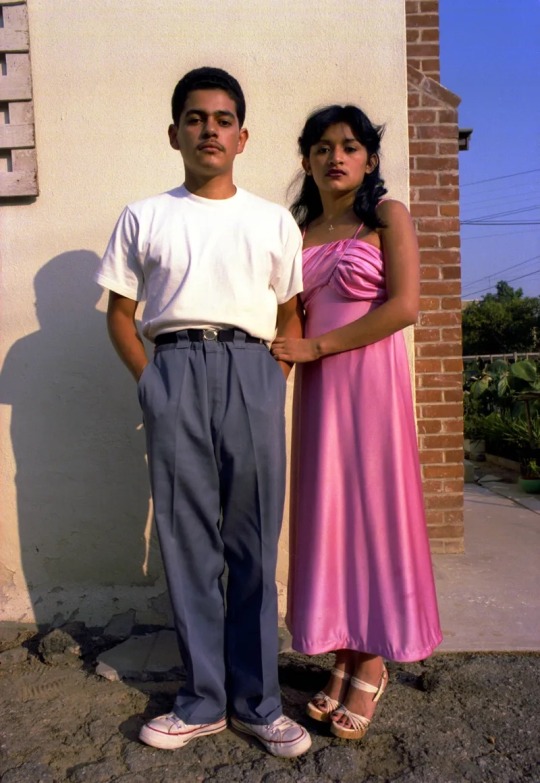
John Valadez, Couple Balam, 1978/80
#🩻#John Valadez#1970s#1980s#los angeles#chicana#chicano#east la#socal#veteranas#brown pride#photography#mexican american#xicana#west coast#history#latin american history#chicano movement#chicano art#arte latinoamericano#arte mexicano
115 notes
·
View notes
Text
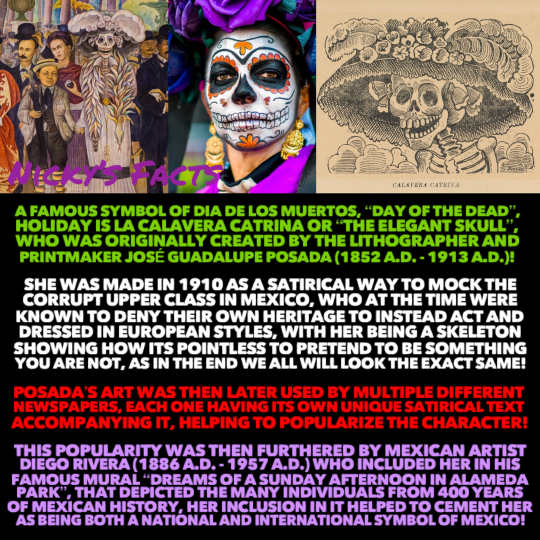
Happy Dia de los Muertos to la Calavera Catrina!🥳
🇲🇽💀🇲🇽
#history#dia de los muertos#la catrina#day of the dead#holiday#mexican history#be yourself#art#latina#josé guadalupe posada#historical figures#latin american history#diego rivera#mexican culture#halloween#female icons#beautiful#femininity#mexico#art history#hispanic culture#celebration#latin america#dreams of a sunday afternoon in alameda#mexico city#nickys facts
93 notes
·
View notes
Text

"Patricio Simonetto’s groundbreaking analysis offers lucid insights on the Argentinean trans experience and the complexities of engaging with a Latin American transgender and travesti archive. Centering trans issues and national discourses, Simonetto bravely engages the epistemic violence of the past as he documents the utopian aspirations and numerous achievements of the present. A Body of One’s Own is a major contribution."
53 notes
·
View notes
Note
What is the history of socialist organizations and their policies with/towards/about Native rights or indigeneous rights, in USA specifically, though you may include other examples (I imagine South America might have a more interesting history about this)? Like from my idle reading it seems to be a case of indifference mostly?
The story is so completely different between the United States and Latin America that they might as well be two separate narratives altogether.
In the case of the United States, socialism really got its start as a predominantly East Coast phenomenon after the major Indian Wars were finished and it wasn't until substantially later that Native Americans were incorporated into the U.S political system, so there was not much of interconnection between the two movements until the 1970s really.
But in the case of Latin America, there have been deep interconnections between leftist movements and indigenous communities going back to at least the early 20th century up until the present day when it comes to political coalition-building.
21 notes
·
View notes
Text
The Sussex Vampire: a bit about Perú
In the last two letters from my dear friend Watson we know about The Adventure of the Sussex Vampire so I have an excuse to dust my old book of history, some English-Spanish dictionaries and Todo Sherlock Holmes.
Mrs. Ferguson (we don't know her name. ACD, how hard was to call her María or Violeta?) and her maid Dolores come from Perú (I know I shouldn't use ´ but I have my Latino ID so I'll do what I want). She was daughter of a Peruvian merchant related to importation of nitrates.
After the Pacific War came a National reconstruction period (1884–1895). During this period Peru has huge external debt and lost many industries related to nitrate production, the occupied provinces of Tacna and Arica were under Chilenization. Latex and oil industries become relevant due to Industrial Revolution but the country was in bankruptcy. In 1886 the Grace Contract was signed between Peru and British bondholders to settle this debt, and the Peruvian Corporation was formed. This corporation agreed to cancel Peru's debt in exchange for £80,000 in annual payments, mining rights, and ownership of the Peruvian rail for 66 years. The corporation also agreed to build 160 kilometers of new railroad.
Nicolás de Piérola was elected president of Peru 1895, and the country began its period known as the Aristocratic Republic. During this time the economy was highly dependent of Britain: The Peruvian Corporation (trains), London Pacific (oil), Cerro de Pasco Minning Corporation (copper), Peruvian Amazon Company (latex rubber) Sugar Company (sugar) and Banco Perú Londres (bank) were the motors of the economy.

Mrs. Ferguson was probably from an aristrocratic family and received a proper education for a woman of her social status, including learning a foreign language like English. Her "alien religion" was Catholicism like the biggest part of the country because that religion reached almost every corner in South America (by choice or force) during the Colonial Era.

The maid Dolores had brown skin, so I guess she was indigenous or mestiza (Spaniard+Indigenous). Like her employer she was Catholic too but she hadn't the same education. There were efforts to increase the number of people able to read, but it was a common practice for kids to leave school and work in the same industries as their parents.
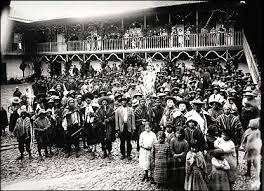

Dolores didn't study English like Mrs. Ferguson, that's why she use Spanish grammar when she speaks:
“She verra ill,” cried the girl, looking with indignant eyes at her master. “She no ask for food. She verra ill. She need doctor. I frightened stay alone with her without doctor.”
She no ask for food = Ella no pregunta por comida ✔
The translation into Spanish made by Juan Manuel Ibeas reflects this with the absence of some sounds and words:
—Ta my enferma gimió la muchacha, mirando con ojos indignados a su señor—. No quere comía. Mu enferma. Necesita doctor. Me da miedo estar sola con ella sin doctor.
And "leesten", IIRC in Spanish we don't have long/short vowels, so the /ɪ/ in listen can be /iː/ like in heel, details that make English a hard language for Latinos, and harder for someone with Dolores' background.
ACD wrote a whole chapter of "The Mystery of Cloomber" with some Scottish accent, so I doesn't surprise me. I like the level of accuracy of this accent. There are high chances that Dolores doesn't even read in Spanish, so this details are more accurate that I expected.
I understand (a bit) why Mrs Fergurson didn't dare to tell her husband what his son did. She was in a foreign country alone with her maid, she had to deal with another language, another religion and she doesn't have her family or friends there. I can't imagine going back to Perú by steamship in times when the Panama Canal was in construction.
#letters from watson#the sussex vampire#SUSS#history#acd canon#sherlock holmes#i wanted to add ID and more details but my brain is melting#latin american history#lost in translation#todo sherlock holmes#letters in the underground
47 notes
·
View notes
Text
"In 1897, a group of soldiers returned to their hometown of Rio de Janeiro after months in the battlefield. Poor, unemployed, and lacking any kind of government assistance, they settled in one of the city’s poorest areas, then called “Morro da Providência” (Providence Hill). Not long after, due to the overwhelming presence of those destitute soldiers who fought for the Republican Army, the area lost this name and earned a new epithet. Years later its name became a worldwide synonym for disenfranchised urban communities, which it retains until today: Morro da Favela (Favela Hill). Favela or faveleira is a plant common to Brazil’s semiarid regions. Its existence became nationally known as thousands of army personnel – together with cannons, machine guns, and other industrial weaponry – were sent to fight and destroy a backland town in Bahia between 1896 and 1897. Surrounded by these favela plants, the town of Canudos was the stage for one of the bloodiest episodes in Latin American history, which historians reckon left some thirty thousand dead.
At the end of the war, newspapers celebrated the progressive forces of the Republic for ridding the country of an unwelcome community of thousands of backland free poor, indigenous people, and the so-called “May 13th” (a derogatory term for formerly enslaved persons who had become free when Brazil passed the emancipation law on May 13, 1888). However, unable to explain how the rebels were able to put up a formidable fight against the country’s official army, many – from contemporaries such as the journalist Euclides da Cunha to twentieth-century academic historians – chose to explain the rebels’ endurance and brave resistance as the effect of a messianic movement. Ignorant and gullible – so the story goes – the poor inhabitants of Bahia’s backlands had become blind followers of a charismatic leader, Antonio Conselheiro, who supposedly had promised them heaven on earth. Such a simplistic explanation, though, not only fails to account for the hazardous impacts of decades-long liberal policies – from land encroachment to criminalizing laws – but also for poor peoples’ ability to understand and resist them. Unwilling to conform, the Canudos rebels were labeled as fanatics and denied a place in modern society. Exclusion in this case, as in many others throughout Latin American history, literally meant demise.
The violence of the War of Canudos extended beyond the slaughtering of Bahia’s rebel poor. The very soldiers who committed this massacre returned home to encounter nothing but poverty and exclusion: They became the inhabitants of the Morro da Favela. As it happened so many times in nineteenth-century Latin America, the poor killed one another to further the projects of visionaries who could not care less about the welfare of ordinary men and women. Those who survived the wars the elite had created encountered poverty and exclusion at every turn. But the elites were more than satisfied: Another obstacle – another alternative way of life – had been removed from the path to political and economic 'progress.''"
Monica Dantas; Roberto Saba. Contestations and Exclusions In: The Cambridge History of Latin American Law in Global Perspective. Cambridge University Press, 2024.
7 notes
·
View notes
Text
The Jakarta Method: Washington's Anticommunist Crusade and the Mass Murder Program that Shaped Our World is a 2020 political history book by American journalist and author Vincent Bevins. It concerns U.S. government support for and complicity in anti-communist mass killings around the world and their aggregate consequences from the Cold War until the present era. The title is a reference to Indonesian mass killings of 1965–66, during which an estimated one million people were killed in an effort to destroy the political left and movements for government reform in the country.
The book goes on to describe subsequent replications of the strategy of mass murder, against government reform and economic reform movements in Latin America, Asia, and elsewhere.[1][2] The killings in Indonesia by the American-backed Indonesian forces were so successful in culling the left and economic reform movements that the term "Jakarta" was later used to refer to the genocidal aspects of similar later plans implemented by other authoritarian capitalist regimes with the assistance of the United States.[3][4]
#The Jakarta Method#books#us backed coup#cold war#us imperialism#imperialism#communism#latin american history#latin america#jakarta#asia#genocide#read this
20 notes
·
View notes
Text

Niña con zapallo, Antonio Berni (1947). Colección de Arte Amalia Lacroze de Fortabat in Buenos Aires
#art#art history#painting#artists on tumblr#oil painting#portrait#realism#latin america#arte moderno#arte latinoamericano#arte argentino#realismo#pintura al oleo#pintura realista#1947#latin american art#latin american history#latin american painting#argentina#argentinian art#argentine art#argentinian painter#oil painting on#oil on canvas#modern art#woman portrait#girl painting#girl portrait#clasismo#classism
84 notes
·
View notes
Text
Read, Explore, Share, Follow, Support
This blog is meant to be a resource for those of you interested in studying Caribbean art from a cross-cultural lens, originally inspired by El Museo del Barrio's exhibition book Caribbean: Art at the Crossroads of the World. As such, tags can be found mainly in English and Spanish and to a lesser extent in French and Dutch. Posts can also be searched by medium, artist, ethnicity or region. Questions, comments, or submissions are always welcome!
❀ Check out what I'm reading - follow me - learn more about me ❀
If you like this blog or enjoy any of my other work please consider signing my virtual guestbook and/or buying me a cup of tea. One of the main things I love about art is being able to open up conversation and dialog about the things that matter. I create work to inspire change and to collaborate, so if this speaks to you I appreciate the support! It may not be the most profitable/capitalistic way of doing things but it is the most healing.
❀ Sign my guestbook here or buy me a cup of tea (mint or ginger) ❀
#caribbean art#arte caribeño#arte latinoamericano#latin American art#West Indian tumblr#caribbean history#latin American history#historia latinoamericana#caribbean literature
19 notes
·
View notes
Text
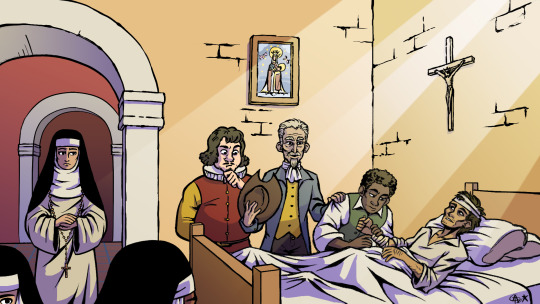

I have this semi-regular client who commissions me for illustrations to use in his YT channel. If you speak spanish you should check out Pero Eso es Otra Historia since he's a pretty cool dude :D
I'll put the context under the cut .3.
During the colonial era of what we now collectively refer to as Latin America, the population of Hispanoamérica had to abide by a law of blood purity: some jobs and careers belonged exclusively to highborn Spaniards and their descendants, leaving out even common criollos (those of pure Spanish descent born in american soil), if their parents were not important enough. One such job was the medical field. Blood purity had to be certified with an actual document, the Certificado de Limpieza de Sangre (Blood Cleanliness Certificate).
Back then, medicine was categorized into two major fields, regulated by an appointed Medical Tribunal: protomédicos (also called doctors and physicians, focused on studying theory and diagnosis), and cirujanos (surgeons, split into two subcategories, latinos and romancistas, both in charge of chirurgic and physical treatment of patients following the diagnose and supervision of protomédicos). Protomédicos and cirujanos were formally recognized as professionals and required basic and higher education. This is in contrast to flebotomistas (often barbers, who would perform small interventions like applying enemas, cataplasms, and pull teeth out), and pharmacists (also known as apothecaries). Both barbers and apothecaries could just set up shop without a hitch but were considered informal practitioners: as such, any random citizen could pick up the role, regardless of actual medical knowledge.
Only full-blooded highborn Europeans could safely aspire to become protomédicos: though there were exceptions made under special circumstances for criollos, mestizos and indigenous people, these were still hard-earned and usually involved some convoluted political shenanigans made by those in charge. Cirujanos saw exceptions much more often, since they were in high demand in hospitals and their job was considered less prestigious thanks to the required physical contact with patients.
One such example of hard-earned exception was the foundation of the Universidad Nacional de San Antonio Abad del Cusco, located in Cusco, Peru. The San Antonio University was founded in order to provide better opportunities for the criollos, mestizos and indígenas who could actually afford a higher education, but were often rejected by schools and universities, particularly the Real Universidad de San Ignacio Loyola, whose Jesuit founders were adamant on their elitism. The San Antonio institution and its students often faced attacks from legitimate Spaniards and highborn criollos, including the Jesuits from the San Ignacio University, who opened a legal case against the Antonians through the Royal Audience of Lima in 1695.
In October 30th, 1696, the envoys of the Viceroy of Peru and the Royal Audience of Lima announced their ratification in favor of the Antonians after a year long dispute issued by the Jesuits.
San Antonio University would remain the strongest academic rival to San Ignacio University until 1772, as the Ignatian institution was forced to close thanks to the expulsion of the Jesuits from any and all Spanish soil. The San Antonio University remains open to this day and ranks within the top 15 universities of Peru.
7 notes
·
View notes
Text
On This Day In History
October 9th, 1967: Che Guevara is executed.
#history#world history#latin american history#20th century#che guevara#marxism#socialism#medical history
90 notes
·
View notes
Photo
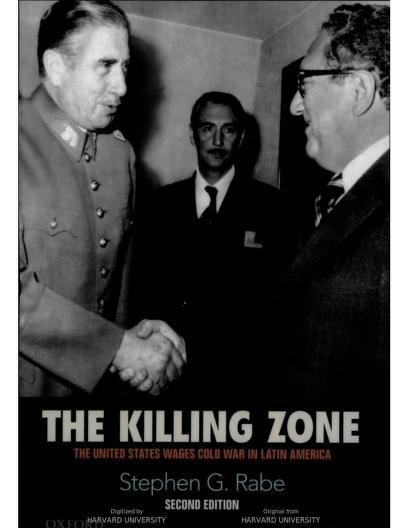
https://archive.org/details/the-killing-zone
11 notes
·
View notes
Text
Happy Hispanic Heritage Month!
🎊🇧🇷🎊🇲🇽🎊🇭🇹🎊🇵🇪🎊🇨🇷🎊
I hope all my Hispanic and Latina sisters are having a amazing day!
🎊🇨🇴🎊🇯🇲🎊🇨🇱🎊🇳🇮🎊🇨🇺🎊
To celebrate here is a collection of history facts that help to showcase are impact on history!
🎊🇦🇷🎊🇵🇦🎊🇭🇳🎊🇺🇾🎊🇻🇪🎊

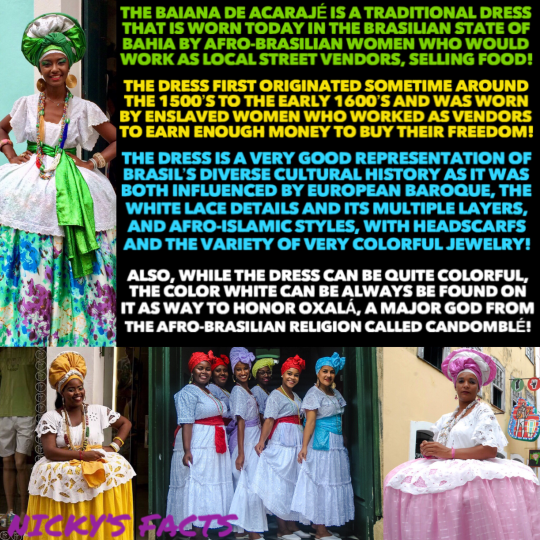


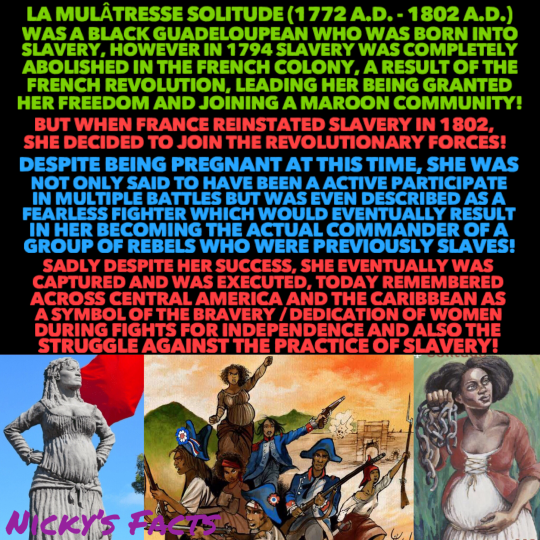
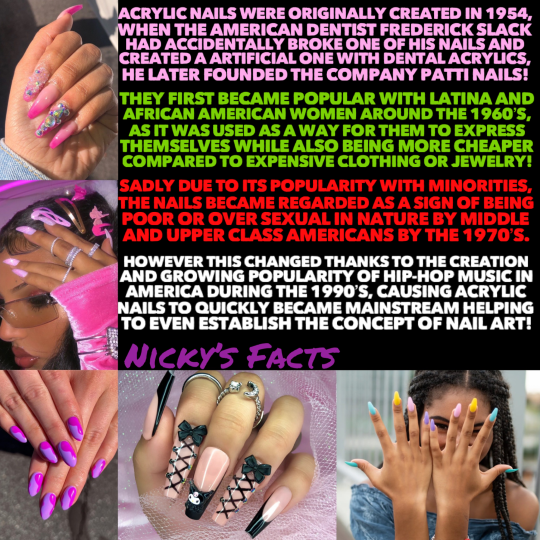

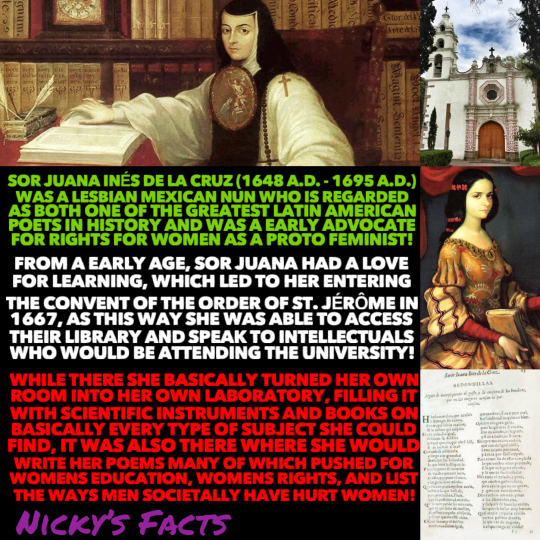

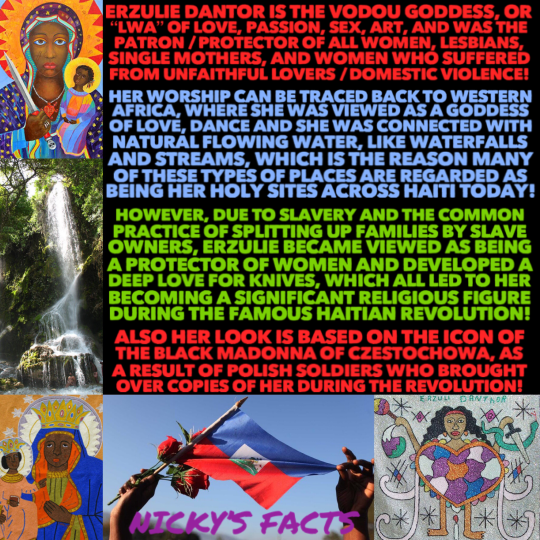
#history#hispanic heritage month#latin america#womens history#hispanic women#central america#south america#black girl magic#united states#latina#lgbt#sisterhood#afro latina#hispanic coquette#latina baddie#latin american history#girl blogger#women empowerment#nickys facts
65 notes
·
View notes
Text

"Through the lens of health and healing, this book presents a welcome and long overdue comparison of the place of highland Indigenous people in the policies and imaginaries of Guatemala and Ecuador. While both countries have demographically significant Indigenous populations, Carey teases out important divergences in policies and practices towards these groups that illuminate other significant spheres of public life. Sensitive to the silences in the archival record, and foregrounding both Indigenous and biomedical practitioners, this analysis will be of interest to scholars and students concerned with encounters between healing systems, racialization, citizenship and state formation, and the history of health, illness and medicine broadly defined."
#uwlibraries#history books#latin american history#history of medicine#indigenous history#history of guatemala#history of ecuador
12 notes
·
View notes
Note
Before July 4, 1776, was there many locations in the United States named after Christopher Columbus? I figured the British weren't wild on him. Also Americans being self-centered isn't a totally unfair accusation, but what's the view of Christopher Columbus in Central America or South America or the Caribbean since they also had a bunch of Christopher Columbus statues, but unsure if any effect to take them down?
There were some early commemorations of Columbus - witness Columbus, Ohio, founded in 1812 - but most commemorations when it comes to place names and monuments and holidays came much later than 1776 as part of a political project to shift the racial/cultural/social/political position of Italians and Italian-Americans by associating themselves with Manifest Destiny (and thus whiteness) rather than Catholicism.
Regarding the cultural role of Columbus in Latin America, it was certainly true that he played more of a direct role in the colonial narrative and you saw Columbus Day holidays in Latin America in the early 1800s. However, after the various wars of independence, the cultural narrative began to shift, with less of an emphasis on the Spanish Empire and more of an emphasis on national identity and indigenous culture. Thus, you see a shift from celebrating Columbus Day to celebrating Día de la Raza in the early 20th century. And yes, in recent years there have been the replacement of Columbus monuments in several Latin American counties.
13 notes
·
View notes
Text
Ideas for historical dramas
Please reblog with ideas for historical dramas set in whatever country and time period you like - especially if it's an event or period that hasn't been portrayed in fictioni before.
My ideas are mostly centered around Iceland:
The live of Jón Arason, the last Catholic Bishop in Northren Iceland, and the Civil war between the Protestants and Catholics in Iceland.
The live of Jörgen Jörgensen, the "Dog Days King", a Dansih privateer, and adventurer, who among other things, fought in the English Wars, had the Icelandic governor arrested with the intent of making Iceland an independent country and worked as a spy for Britain for a while (albeit not a diligent one), and spent his last years in Tasmania.
The "Age of Sturlungs", a civil war between Icelandic chieftains in the 1200s, which ended with Norway taking over Iceland.
The "Turkish Robbery", a pirate attack on the shores of Iceland, that ended with several Icelanders being sold into slavery in North-Africa. It would be interesting to make a show about how the Icelanders adapted to live over there, and how the ones that made it back to Iceland readjusted to life there.
Life of Hans Jonathan, a man born into slavery at a Danish Colony in the Carribbean, escaped and fought in the Danish navy, got apprehended by his former captor, was sentenced to continued enslavement after a legal trial which is still studied at Danish law schools, but escaped and fled to Iceland, where married a local woman and lived out his life.
The Spaniard Killlings; the brutal conflicts between Icelandic men led by Ari Magnússon, an icelandic distric commmisioner, and Basque whale hunters stationed in Iceland.
The Danish Civil Wars in 1131-57.
#historical drama#story ideas#history#culture#historical fiction#world history#human history#european history#asian history#african history#american history#latin american history#australian history
3 notes
·
View notes